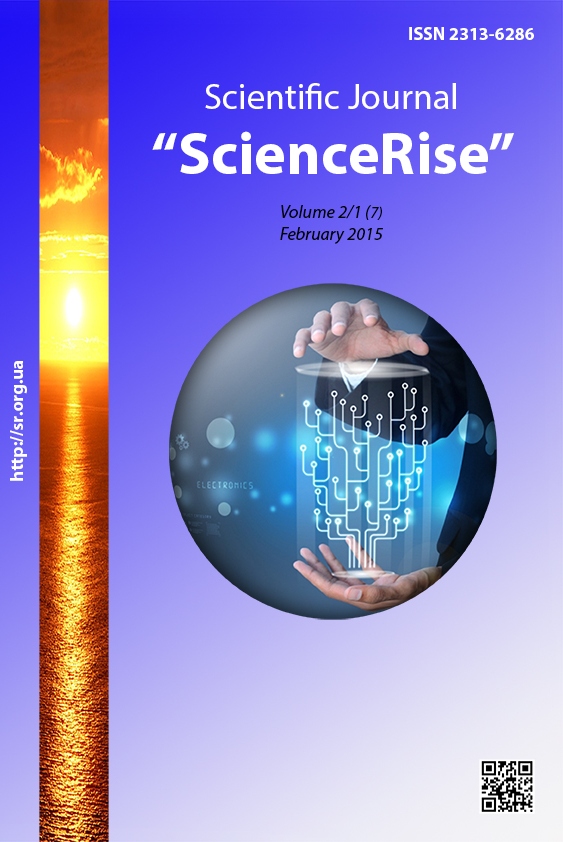Spatial modules of «mental mapping» of manorial estates in Ukraine of the XIX century as a manifestation of self-identification of the owner
DOI:
https://doi.org/10.15587/2313-8416.2015.37407Keywords:
manorial estate, mental maps, self-identification, Russian Empire, spatial representation, mentalityAbstract
The problem of existence in Ukraine privately manorial estates is examined by analyzing the assimilation of information by the individual about outworld in the mental maps – forms of conceptualization of spatial representations. It is proved that the interpretation of spatial modules of estate complexes contributed to their masters understanding attitude to the state, society, and nature - the implementation of self-identification processes
References
Downs, R. M., Stea, D. (1982). Kognitive Karten. Die Welt in unseren Köpfen, New York: Harper & Row, 392.
Schenk, F. B. (2002). Mental Maps. Die Konstruktion von geographischen Räumen in Europa seit der Aufklärung. Geschichte und Gesellschaft, 28, 493–514.
Kolesnyk, I. (2013). Mental᾽ni mapy yak instrumentariy istoryka. Eydos, 7, 159–168.
Yavorsky, A., Tarlou, K. Vvedenye v semyotycheskye peyzazhy. Available at : http://gefter.ru/archive/5322 (Last accessed: 10.07.2012)
Koposov, N. E. (2001). Kak dumayut ystoryky. Moscow, Russia: Novoe lyteraturnoe obozrenye, 326.
Kolesnyk, I. I. (2012). Mental᾽ne kartohrafuvannya ta profesiya istoryka. Ukrayins᾽kyy istorychnyy zhurnal, 5 (506), 135–156.
Ionov, I. N. (2007). Civilizacionnaja samoidentifikacija kak forma istoricheskogo soznanija. Iskusstvo i civilizacionnaja identichnost᾽. Moscow, Russia: Nauka, 169–187.
Svyryda, Y. Y. (1999) Mezhdu Peterburhom, Varshavoy y Vyl᾽no: khudozhnyk v kul᾽turnom prostranstve XVIII‑XIX vv. Moscow, Russia: OHY, 360.
Marasynova, E. N., Kazhdan, T. P. (1998). Kul᾽tura russkoy usad᾽by. Ocherky russkoy kul᾽turы XIX veka: obshchestvenno-kul᾽turnaya sreda Moscow, Russia:Izdatel᾽stvo Moskovskogo universiteta, 265–372.
Gorodnova, L. E. (2010). Smyslovoj kontinuum ponjatija «usad᾽ba». Analitika kul᾽turologii, 2 (17). Available at: http://analiculturolog.ru/component/k2/item/195-rticle_7.html (Last accessed: 29.09.2010 )
Budzar, M. M. (2011). Istoryko-kul᾽turna model᾽ pans᾽koyi sil᾽s᾽koyi sadyby v Ukrayini XVIII–XIX stolit᾽: teoretychni zasady doslidzhennya. Visnyk DAKKiM, 2, 145–149.
Murav᾽ev-Apostol, M. I. (1922)/ Vospominanija i pis᾽ma, Petrograd, Russia: «Byloe», 27.
Materialy dlja biografii G. P. Galagana: otryvki iz junosheskogo dnevnika G. P. Galagana, 1836–1841. (1898). Kievskaja starina, 62, 7/9, 189–224.
Instytut rukopysu Natsional᾽noyi biblioteky Ukrayiny imeni V. I. Vernads᾽koho (IR NBU im. V. I. Vernads᾽koho), 10, 1, 17416, 2.
Jespinoza, A. S. (1995). Kto est᾽ chelovek? Filosofskaja antropologija . Jeto chelovek : antologija filosofskih rabot. Moskva, Russia: Vysshaja shkola, 75–100.
Sörlin, S. (1999). The articulation of territory: Landscape and the constitution of regional and national identity. Norsk Geografisk Tidsskrift - Norwegian Journal of Geography, 53 (2–3), 103–112.
Kapnyst, V. V. (1960). Sobranye sochynenyy. T. 1. Hudozhestvennye proizvedenija. Moscow, Russia: Izdatel᾽stAN SSSR, 772.
Kapnyst, V. V. (1960). Sobranye sochynenyy. T. 2. Perevody. Stat᾽i. Pis᾽ma. Moscow, Russia: Izdatel᾽stvo AN SSSR, 630.
IR NBU im. V. I. Vernads᾽koho, 1, 1, 6886, 7.
IR NBU im. V. I. Vernads᾽koho, 1, 1, 6860, 2.
Rod Galaganov (1896). 25-letie Kollegii Pavla Galagana v Kieve. Kiev, 1–26.
Aksakov, I. S. (1988). Pis᾽ma k rodnym. 1844–1848. Moscow, Russia: Nauka, 704.
Downloads
Published
Issue
Section
License
Copyright (c) 2015 Марина Михайлівна Будзар

This work is licensed under a Creative Commons Attribution 4.0 International License.
Our journal abides by the Creative Commons CC BY copyright rights and permissions for open access journals.
Authors, who are published in this journal, agree to the following conditions:
1. The authors reserve the right to authorship of the work and pass the first publication right of this work to the journal under the terms of a Creative Commons CC BY, which allows others to freely distribute the published research with the obligatory reference to the authors of the original work and the first publication of the work in this journal.
2. The authors have the right to conclude separate supplement agreements that relate to non-exclusive work distribution in the form in which it has been published by the journal (for example, to upload the work to the online storage of the journal or publish it as part of a monograph), provided that the reference to the first publication of the work in this journal is included.

